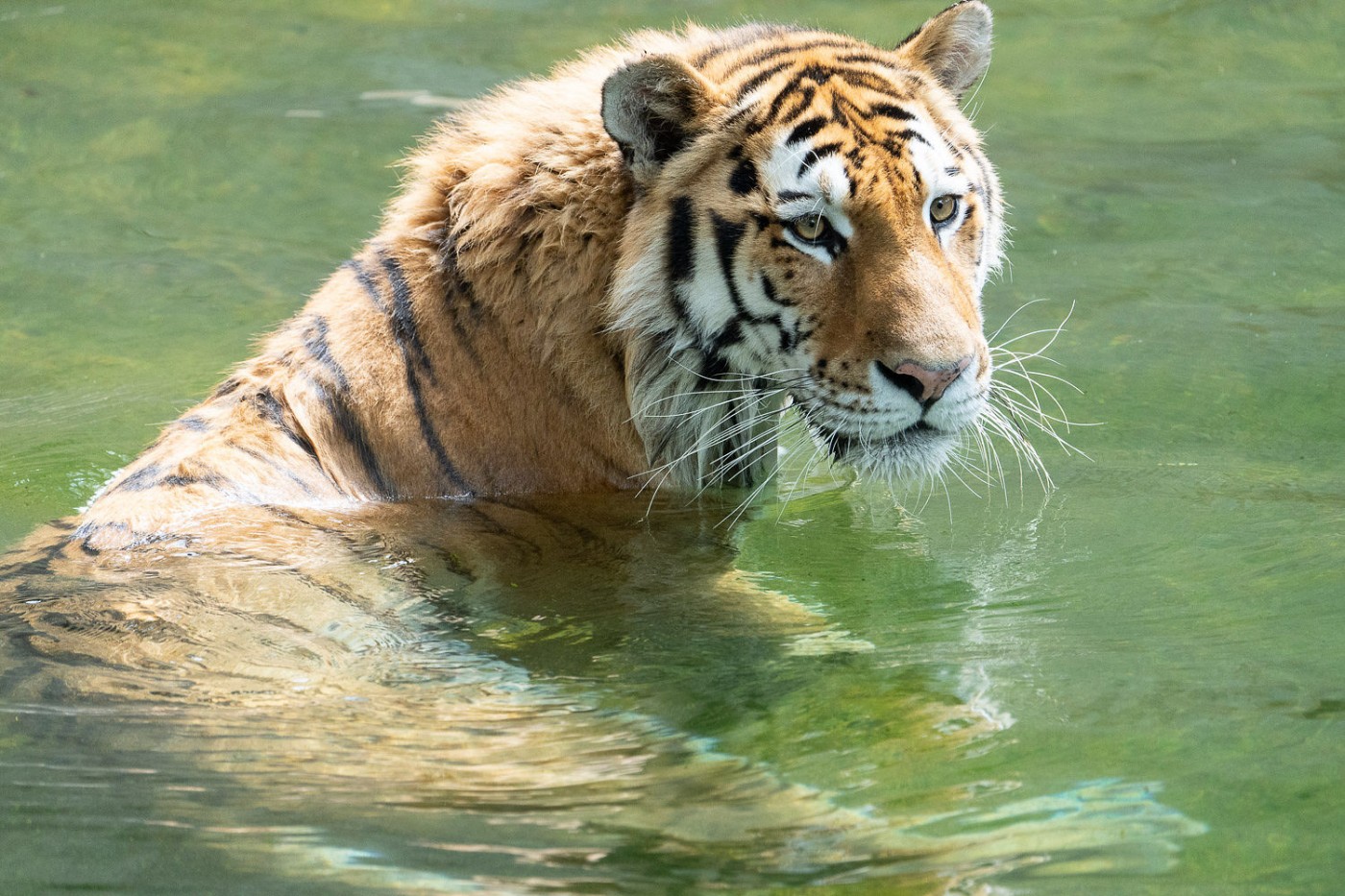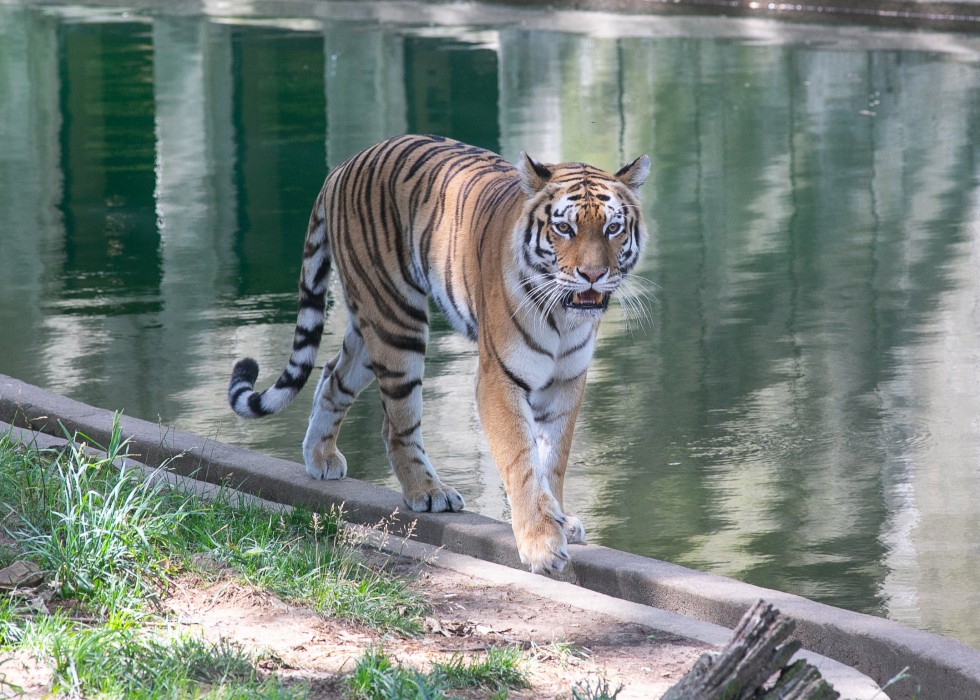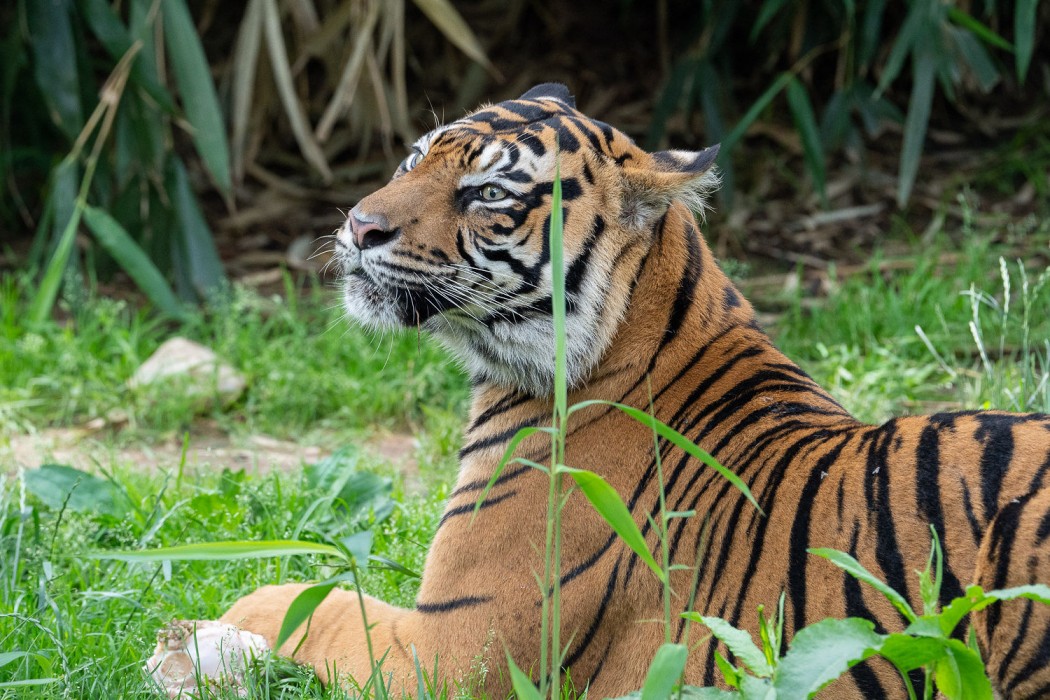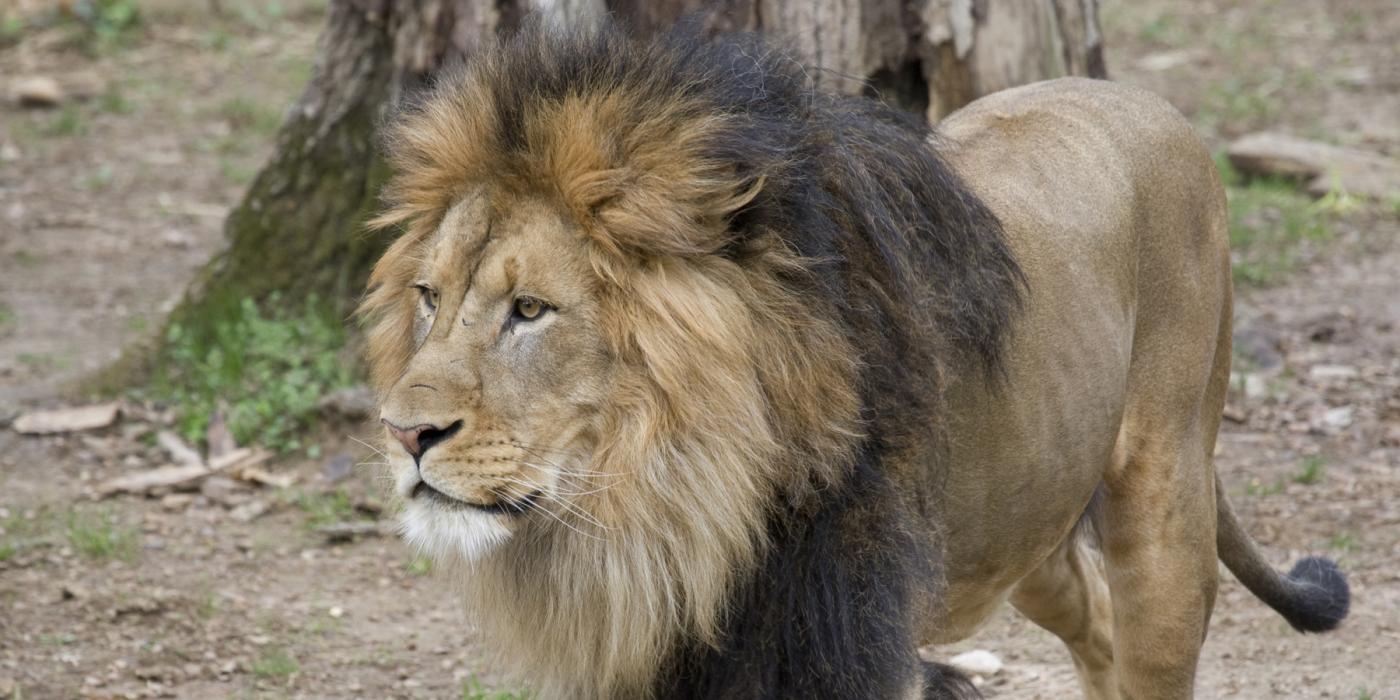New at the Zoo: Meet Amur Tiger Metis

The new guy in town is calm, curious and cautious. In other words, he’s one cool cat.
Meet Metis! The Smithsonian’s National Zoo’s new 5-year-old Amur tiger arrived in April from the Indianapolis Zoo in Indiana per a breeding recommendation from the Association of Zoos and Aquariums’ Species Survival Plan (SSP). Nikita, our 9-year-old female Amur tiger, does not have many relatives in the North American population and is considered genetically valuable. The Zoo has not had Amur tiger cubs since 1948—73 years ago—so the Great Cats team is excited and cautiously optimistic at the possibility of breeding this species!
Metis is easily distinguished from Nikita and our female Sumatran tiger, Damai, because of his size. At 360 pounds, he is the largest of all three cats. Nikita comes in second, tipping the scales at 275 pounds. Last but not least, Damai is the Zoo’s most petite tiger, weighing in at 200 pounds.
The Zoo’s Department of Nutrition Science delivers a commercial carnivore diet to the Great Cats team daily, and keepers prepare the diets. The diet looks like hamburger meat but is designed to meet the nutritional needs of carnivores. In addition to ground beef, keepers also feed the cats beef chunks (mini filets), bones (femurs or knuckles) as well as frozen-thawed rabbits to ensure their diet is nutritionally complete. Each cat receives an amount relative to his or her body weight.

Each tiger has their own unique personality, and over time, keepers get to know their behavioral quirks and food preferences. Tigers tend to be guarded, so it normally takes them a while to adjust to their new environment, sounds, smells, people and their neighbors.
Initially, Metis was quite cautious when he arrived at the Zoo. As he acclimated to his new habitat, however, keepers saw that nervousness subside, and his curiosity took over. They say that Metis explored his new surroundings faster than many of the tigers that the Zoo has cared for in the past. Now that he has settled into his new home, Metis is quite calm and relaxed. Nikita—his belle-to-be—is more elusive and a little sassy!

Metis and Nikita’s behavior will indicate to the Great Cats team when they are ready to meet face-to-face. For now, there is a mesh “howdy door” safety barrier between their indoor enclosures where they can see, smell and communicate with one another.
The team is looking for behavioral cues to determine if Metis and Nikita are comfortable enough to share a space. If so, they expect that both cats will calmly approach the howdy door, make friendly “chuff” vocalizations at one another and rub their heads together through the mesh. Nikita may even roll over onto her back. In general, when things go positively, their overall demeanor is calm and their movements are not aggressive. If they are uncomfortable, they may sit toward the back of the enclosure and appear hyper-sensitive to noises. When they are alert and on guard, that is a sign they are not very comfortable.
If all goes well and they show interest in one-another, keepers will wait until she goes into estrus to introduce them in the same space. Adult female tigers go into estrus roughly once a month (sometimes, they skip a month or two), and that is when they are receptive to sharing a space and breeding.
In zoos, Amur tigers tend to breed most frequently in the winter months. If they do breed and she conceives, her gestation will be about 103 days, or just over 3 months.

Planning to prowl over to the Great Cats exhibit to meet Metis? He—along with Nikita, Damai and the Zoo’s African lions—rotate throughout all three habitats. Depending on the day, Metis may be out in the early-to-mid-morning or later in the afternoon. He tends to be quite active during the day and seems to enjoy wading in the water and swimming—especially when a heat wave sweeps through the Washington, D.C., region!
This story was featured in the July 2021 issue of National Zoo News. Know a budding biologist who loves tigers? Check out the Smithsonian Kids’ book I Am a Tiger! Young children can wiggle a finger puppet as a Sumatran tiger and her cubs play, hunt and splash in a stream. A portion of the proceeds support the Smithsonian’s National Zoo and Conservation Biology Institute’s animal care and conservation programs.
Related Species:





